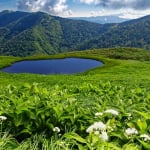Name: Chita Okada Simple Post Office
Address: 8 Nakaya, Okada, Chita City, Aichi Prefecture
Official Website: http://okadamachinami.com/midokoro/machinami/yuubinkyoku/
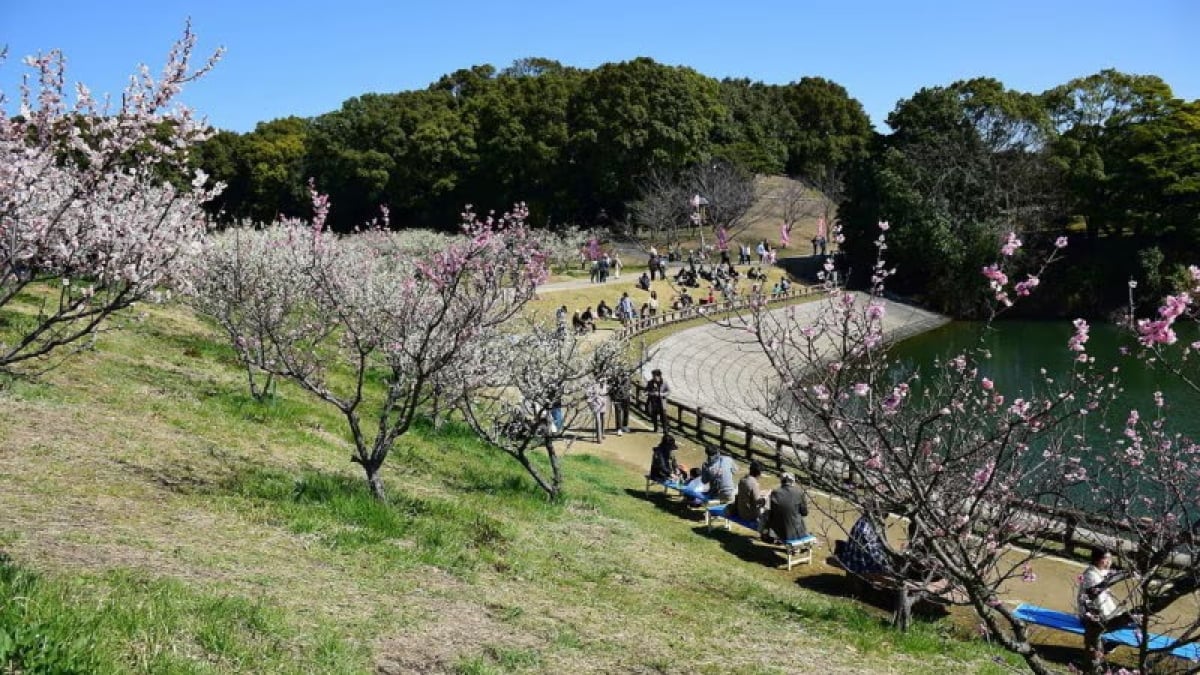
25 Recommended Sightseeing Spots in Chita City: A Stroll Through Nature and History
Chita City in Aichi Prefecture is located in the northwest part of the Chita Peninsula. Its coastline along Ise Bay stretches for 15 km, and the terrain consists of gentle hills, with the highest peak being around 70 meters. The coastal areas are home to industrial zones with steelworks, oil refineries, and power plants, while agriculture flourishes in the inland regions.
Such industrial development would not have been possible without the establishment of the Aichi Irrigation System, including reservoirs like the Souri Pond. The industrial zones and residential areas are separated by lush greenery, making the city a comfortable place to live. Souri is known for its fragrant plum blossoms, Okada lets you feel 400 years of history, and Shinmaiko is the go-to for marine leisure. Take a leisurely stroll through Chita City, where rich nature and tranquil landscapes remain, and explore its many charming spots.
table of contents
[x] close
25 Recommended Sightseeing Spots in Chita City: A Stroll Through Nature and History
- 1. Enjoy a Stroll Through Town! “Chita Okada Simple Post Office”
- 2. Momen-Gura Chita (Former Takeuchi Torao Cotton Storehouse)
- 3. Seaside Resort Area “Shinmaiko Marine Park”
- 4. White Bridge Over the Sea “Shinmaiko Fine Bridge”
- 5. Chita’s Autumn Leaves Spot “Hinaga Shrine’s Maple Valley”
- 6. Strawberry Picking in Chita “Blue Chip Farm”
- 7. Learn and Experience “Chita Electric Power Pavilion”
- 8. The Temple of Daruma “Daikōji”
- 9. Laughter Brings Good Fortune “Owari Manzai”
- 10. Remembering the Sengoku Period: “Okusa Park (Okusa Castle Ruins)”
- 11. The Glasses-Wearing Kobo Daishi: “Daichiin (Megane Kobo)”
- 12. A Relaxing Park with Ancient Kilns: “Nanamagari Park”
- 13. The Unburned Daikokuten: “Fukushoji Temple”
- 14. Famous for Plum Blossoms: “Shobo-in Temple”
- 15. Lively Spring Festival: “Okada Shinmei Shrine”
- 16. Learn About Chita's Livelihoods: “History and Folklore Museum”
- 17. Rub the Jizo for Healing: “Okusa Jizo Temple”
- 18. Enjoy Cherry Blossoms and Sports: “Asahi Park”
- 19. Thrilling Spectacle: “Asakura Ladder Lion Dance”
- 20. Learn About the History of Water and Life: “Water Life Pavilion”
- 21. Plum Blossom Heaven: “Souri Green and Flower Interaction Park”
- 22. Comprehensive Plum-Themed Facility: “Plum Museum”
- 23. Oldest Muromachi-Style Temple in Okada: “Jiunji Temple”
- 24. Temple of the Pilgrimage Founder: “Myorakuji Temple”
- 25. Natural Monument: “Inari Shrine’s Mamenashi Tree”
- ◎ Summary
1. Enjoy a Stroll Through Town! “Chita Okada Simple Post Office”
The “Chita Okada Simple Post Office” is a tourist spot where you can enjoy the retro streetscape of Chita City. This pastel blue retro building was built in 1902 (Meiji 35). Thanks to the efforts of local volunteers, it was saved from demolition and is now a Registered Tangible Cultural Property of Japan.
In the Okada area, which flourished in cotton production since the Meiji era, female workers used this post office to send letters and money back home. Only 20 pre-war buildings remain in Aichi Prefecture, and among them, the standout feature of this post office is that it’s still operating today! Why not send a postcard as a souvenir?
2. Momen-Gura Chita (Former Takeuchi Torao Cotton Storehouse)
“Momen-Gura Chita” is a tourist spot where you can learn about the history of Chita cotton. Since the Edo period, the cotton weaving industry has thrived here. With limited arable land, hand weaving with looms was a vital job for women. This handwoven cotton, known as “Chita Sarashi,” became popular in Edo (modern-day Tokyo).
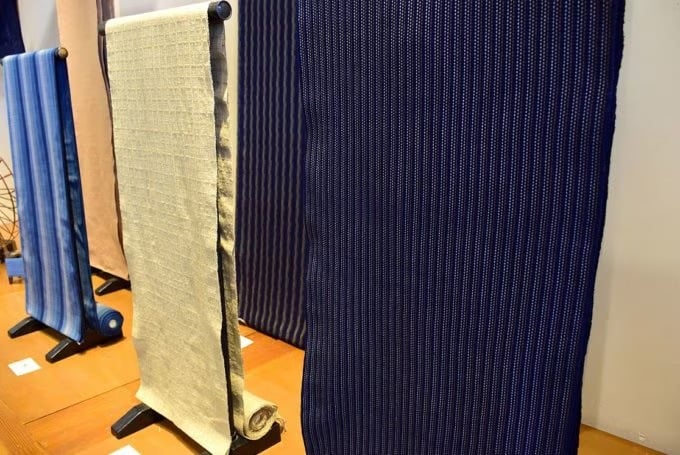
Although the industry declined due to mass production by industrial machines, in the Okada area, several storehouses have been restored to preserve cotton culture. “Momen-Gura Chita” is the second registered cultural property in the city. You can even experience hand weaving by making a reservation.
Name: Momen-Gura Chita
Address: 9 Nakaya, Okada, Chita City, Aichi Prefecture
Official Website: http://momengura.cside.ne.jp/
3. Seaside Resort Area “Shinmaiko Marine Park”
Shinmaiko Marine Park, marked by its white windmill, is a major resort area in Chita City. Opened in 1997, the artificial beach “Blue Sun Beach” is a popular summer destination near Nagoya.
Visitors can enjoy BBQs, marine sports, and picnics on the grassy fields. With beach volleyball courts and fishing facilities, it’s a year-round attraction. Watching large ships sail by and planes take off or land at Centrair Airport adds to the charm. The sunset over Blue Sun Beach is also stunning.
Name: Shinmaiko Marine Park
Address: 2 Midorihama-cho, Chita City, Aichi Prefecture
Official Website: http://www.marine-park.jp/
4. White Bridge Over the Sea “Shinmaiko Fine Bridge”
The 435m-long “Shinmaiko Fine Bridge” connects Shinmaiko Marine Park to the opposite Shinmaiko coast. Six terraces along the bridge provide panoramic views of the beach and windmill.
Watching the sunset behind the windmill is a breathtaking experience. The Shinmaiko coast used to be a beach destination but is now known for windsurfing. National competitions such as the Ise Bay Cup are held here. Enjoy the sea breeze and scenic views of Chita.
Name: Shinmaiko Fine Bridge
Address: Midorihama-cho, Chita City, Aichi Prefecture
Official Website: http://www.marine-park.jp/index.html
5. Chita’s Autumn Leaves Spot “Hinaga Shrine’s Maple Valley”
To enjoy autumn foliage in Chita, visit the popular “Hinaga Shrine,” a five-minute walk from Hinaga Station. The shrine enshrines Hinaga-no-Mikoto, Yamato Takeru-no-Mikoto, and Ukanomitama-no-Mikoto. The spring ritual “Umazu Shinji” is designated an intangible folk cultural property.
The maple valley began in the Taisho period when about 100 maple trees were planted in the adjacent valley. Late November to early December is peak season, creating a beautiful red, yellow, and orange gradation. Don’t miss this colorful autumn scene.
Name: Hinaga Shrine
Address: 4 Morishita, Hinaga, Chita City, Aichi Prefecture
Official Website: http://www.medias.ne.jp/~fjok/
6. Strawberry Picking in Chita “Blue Chip Farm”
Chita Peninsula is dotted with strawberry-picking farms. One of them is “Blue Chip Farm” in Chita City.
They grow the variety “Akihime,” known for its high sugar content and low acidity. The elevated cultivation method ensures hygiene. The popular topping service (100 yen for five flavors including whipped cream, cream cheese, chocolate, chocolate chips, and caramel sauce) is a must-try. Book early—spots fill up fast!
Name: Blue Chip Farm
Address: 2-21 Soburidai, Chita City, Aichi Prefecture
Official Website: http://ichigofarm.jp/index.html
7. Learn and Experience “Chita Electric Power Pavilion”
Located in Kitahama-cho, Chita Electric Power Pavilion is part of the Chita Thermal Power Station. Known for its massive green twin chimneys, the site is as large as 12 Nagoya Domes and houses about 130 species of trees.
The pavilion introduces the world of electric energy through panels, interactive games, and exhibits suitable for all ages. You can also tour the power station by reservation.
Name: Chita Electric Power Pavilion
Address: 23 Kitahama-cho, Chita City, Aichi Prefecture
Official Website: http://www.chuden.co.jp/tita-pr/
8. The Temple of Daruma “Daikōji”
Commonly known as “Daruma Temple,” Daikōji has over 1,000 years of history. Originally named Daifukuji, it became part of the Myoshin Temple sect after surviving multiple conflicts.
The temple honors the “Dainichi Fuku Daruma,” symbolizing wisdom and compassion, and you can purchase various Daruma figures. On Coming-of-Age Day, the “Good Fortune Daruma Festival” is held, where people make wishes and fill in the Daruma’s left eye upon fulfillment.
Name: Daikōji
Address: 52 Ochida, Daikōji, Chita City, Aichi Prefecture
Official Website: http://www.medias.ne.jp/~daikoji/
9. Laughter Brings Good Fortune “Owari Manzai”
When visiting Chita, experience its traditional performing arts. “Owari Manzai,” a national intangible folk cultural property, is a celebratory performance art passed down since the Kamakura period.
Two performers, a master and an assistant, visit homes during New Year offering blessings, dance, and humorous banter. The Owari Manzai Preservation Society continues this tradition with historical documentation and performances at events.
Name: Owari Manzai Preservation Society
Address: 156 Shiokaido, Yawata, Chita City, Aichi Prefecture
Official Website: http://owarimanzai.com/
10. Remembering the Sengoku Period: “Okusa Park (Okusa Castle Ruins)”
“Okusa Park (Okusa Castle Ruins)” in Chita City is a relaxing tourist spot for both adults and children. This site once held Okusa Castle, built by Oda Nagamasu (Yurakusai), the younger brother of Oda Nobunaga. It is now maintained as an urban park. Highlights include the walls surrounding the inner and second baileys, earthen embankments about 4 meters high, and a water moat.
Although construction of the castle began, Oda Nagamasu was soon relocated to Settsu Province, and the castle was abandoned unfinished—earning it the nickname “The Unfinished Castle.” Still, it remained a key strategic point in the Chita region. In the Edo period, the Owari Domain initiated preservation efforts, allowing the embankments and moats to survive into modern times. Strolling through Okusa Park while imagining this history is a lovely experience. A viewing tower modeled after a castle keep offers panoramic views of Ise Bay.
Name: Okusa Park (Okusa Castle Ruins)
Address: 110-1 Higashiyashiki, Okusa, Chita City, Aichi Prefecture
Official Website: http://chita-kanko.com/play/park/
11. The Glasses-Wearing Kobo Daishi: “Daichiin (Megane Kobo)”
Daichiin in Chita City is famously known as “Megane Kobo” (Glasses Kobo) and is a rare tourist spot. This Buddhist temple, founded by Prince Shotoku, enshrines the main deity Sho-Kannon Bosatsu and Batou-Kannon Bosatsu in front. The nickname comes from the Migawari Daishi statue inside.
In the Ansei era, a blind visitor prayed to a monk for his sight, and miraculously, his vision was restored—though the monk's left eye was injured in return. The grateful visitor left behind his glasses, which the statue now wears, thus earning its unique name.
The temple grounds feature the Gokoku Daishi and 21 training Daishi statues, a pagoda, eight guardian Buddhas, a "bag stone," and a glasses memorial. Be sure to visit this unique temple on your Chita tour.
Name: Daichiin (Megane Kobo)
Address: 1-196 Honmachi, Minamikasugai, Chita City, Aichi Prefecture
Official Website: http://www.daichiin.jp/top.php
12. A Relaxing Park with Ancient Kilns: “Nanamagari Park”
Located in Yawata, Chita City, “Nanamagari Park” is a civic park east of Souri Pond. It features a playground with large equipment, tennis courts, a multi-purpose field, and walking paths—making it a beloved community space. Its most unique feature is the remains of ancient kilns from the 12th–13th centuries. While 14 kilns were discovered during development, only two well-preserved ones remain and were designated as Chita City historic sites in 1991.
One of the preserved kilns from the 13th century still retains the firebox, combustion chamber, flame separator, firing chamber, and chimney—making it the largest kiln remains in the Chita region. If you're visiting Chita, consider stopping by to see this fascinating piece of history.
Name: Nanamagari Park
Address: 1 Nanamagari, Yawata, Chita City, Aichi Prefecture
Official Website: https://www.city.chita.lg.jp/bunka/bunka/bunka11.html
13. The Unburned Daikokuten: “Fukushoji Temple”
If you're touring Chita, try visiting temples of the Chita Shikoku 88 Pilgrimage. Fukushoji Temple, founded in 1560, is the 78th temple in the pilgrimage. In 1913, a great fire destroyed all five halls and many historic records. The temple was rebuilt in 1926.
Remarkably, only the wooden statue of Daikokuten survived the fire, leading it to be called “Yaken Daikokuten” (Unburned Daikokuten), and it is worshipped for fire prevention, good luck, and protection. The current concrete statue was donated by followers. The original statue is displayed in front of the main hall only during the spring pilgrimage season.
Name: Fukushoji Temple
Address: 1-8-3 Shinchihigashi-cho, Chita City, Aichi Prefecture
Official Website: http://chita-kanko.com/play/shrines-and-temples/
14. Famous for Plum Blossoms: “Shobo-in Temple”
“Shobo-in Temple,” a sacred sightseeing site in Chita, is the 73rd temple of the Chita Shikoku 88 Pilgrimage. Founded in 1184 at the behest of Emperor Gotoba, it was a prayer temple for national peace and imperial prosperity. Though many structures and treasures were lost in wars, the main hall remains intact.
In the Heisei era, vivid paintings of birds, flowers, and dragons were added to the ceilings and sliding doors. As one of the “Souri Five Temples,” nestled in a nature-rich mountain area, it’s a rare pilgrimage spot. Shobo-in is especially famous for its stunning plum blossoms, attracting many tourists in early spring. Why not visit all five Souri temples?
Name: Shobo-in Temple
Address: 30 Jizowaki, Souri, Chita City, Aichi Prefecture
Official Website: http://chita-kanko.com/play/shrines-and-temples/
15. Lively Spring Festival: “Okada Shinmei Shrine”
Founded in 1622, “Okada Shinmei Shrine” in Chita City enshrines Amaterasu Omikami and Toyouke Omikami. The current shrine hall, built in 1957 using old timber from Ise Shrine, was re-roofed in 2008 with cypress bark, adding to its grandeur.
Every April, the “Okada Spring Festival” takes place in front of the shrine’s main gate. Three floats—Higuruma (Sun), Amaguruma (Rain), and Kazeguruma (Wind)—parade through town. Known for its powerful direction-changing “Nerimawashi,” the festival is a thrilling spring celebration. Each float features puppet performances, especially Higuruma’s karakuri dolls with their dazzling transformations. On the eve of the festival, children carry lanterns and play drums.
Name: Okada Shinmei Shrine
Address: 35 Nakaya, Okada, Chita City, Aichi Prefecture
Official Website: http://okada-shinmeisha.or.jp/
16. Learn About Chita's Livelihoods: “History and Folklore Museum”
After WWII, the creation of Nagoya’s coastal industrial zone brought rapid changes to livelihoods in Chita, especially fishing. The “History and Folklore Museum” began by collecting and displaying old fishing tools. It later expanded to include artifacts from Chita's cotton industry, which flourished during the Edo period.
A highlight is the 15-meter-long “Fujii Maru,” a preserved Utasebune sailboat used in dragnet fishing—the only one of its kind still in existence and a Chita City cultural asset. Exhibits and videos clearly explain the everyday lives and industries of Chita’s people.
Name: History and Folklore Museum
Address: 12-2 Midoricho, Chita City, Aichi Prefecture
Official Website: http://www.city.chita.lg.jp/docs/2013121600071/
17. Rub the Jizo for Healing: “Okusa Jizo Temple”
“Okusa Jizo Temple,” formally known as “Manizan Jizoji,” is the 70th temple in the Chita Shikoku 88 Pilgrimage. Located in Okusa, Chita City, it’s affectionately known as “Okusa’s Jizo.”
Legend says the Jizo statue once lay at the bottom of a well and appeared in a blind woman’s dream, saying if she rescued and repaired the well, her vision would be restored—which it was. Since then, people pour water on the statue and rub the same part of the body that is ailing, praying for healing. This gave rise to the name “Enmei Mizukake Jizo” (Life-Extending Water-Pouring Jizo). It’s also close to the Okusa Castle Ruins, making it a convenient stop.
Name: Okusa Jizo Temple
Address: 43-1 Higashiyashiki, Okusa, Chita City, Aichi Prefecture
Official Website: http://ookusajizouji.com/
18. Enjoy Cherry Blossoms and Sports: “Asahi Park”
Located in the southern part of Chita City, “Asahi Park” is a large-scale public park with an adventure plaza, kids’ playground, athletic field, gymnasium, tennis courts, flower garden, and stream. It’s bustling year-round with people enjoying nature and sports.
The park is especially famous for cherry blossoms and peonies. In early to mid-April, about 700 cherry trees turn the park pink, forming tunnels of blossoms around the sports fields—perfect for photos. In mid-May, around 1,000 peony plants bloom along a 100-meter path in vivid red, white, and pink. Enjoy a relaxing day in Asahi Park.
Name: Asahi Park
Address: 1 Ishine, Kanazawa, Chita City, Aichi Prefecture
Official Website: http://www.city.chita.lg.jp/docs/2014012300520/
19. Thrilling Spectacle: “Asakura Ladder Lion Dance”
A signature Chita event is the “Asakura Ladder Lion Dance” held at Musan Shrine. This sacred ritual is designated an intangible folk cultural asset by the prefecture.
Founded in 1266, Musan Shrine has a long history. Legend says the festival began after a wild boar (“lion”) that threatened the village was driven away using ladders. The following year, the festival was started to pray for a good harvest and honor the beast’s spirit. Two performers dance as lions atop a 9-meter tower accessed via a 31-step ladder, performing acrobatic stunts to festive music.
Spectators hold their breath in suspense, fearing a fall! The event is held annually on the first Sunday in October. Don’t miss this exciting local tradition.
Name: Musan Shrine
Address: 2 Higashiyashiki, Shinchi, Chita City, Aichi Prefecture
Official Website: http://www.aichi-c.ed.jp/contents/syakai/syakai/chita/chi006.htm
20. Learn About the History of Water and Life: “Water Life Pavilion”
The “Water Life Pavilion” is a tourist facility located by the Souri Pond, which stores water from the Aichi Irrigation System. This museum highlights the hardships the Chita region historically faced regarding water, the relationship between people and water, the history and functions of the Aichi Irrigation System, and the tools used with water—all to emphasize its importance. Visitors receive a dam card of Souri Pond and a bottle of Chita’s tap water sourced from the Nagara River. With free admission and a souvenir, it’s well worth a visit!
It’s open until 4 PM normally, and until 3 PM in winter, so plan to arrive early.
Name: Water Life Pavilion
Address: 48-1 Itachiwaki, Souri, Chita City, Aichi Prefecture
Official Website: http://www.pref.aichi.jp/soshiki/kigyo-suiji/0000010193.html
21. Plum Blossom Heaven: “Souri Green and Flower Interaction Park”
Located along the famous plum blossom-lined Souri Pond, “Souri Green and Flower Interaction Park” features playgrounds, the Plum Museum, Flower Hall, and more, making it a relaxing space for locals.
With about 5,100 plum trees of 25 varieties, the park bursts into soft pastel pink colors when in full bloom. Visitors can also enjoy cherry blossoms in spring, wisteria in early summer, and autumn leaves in the fall. Birdwatchers gather here in winter.
The “Souri Pond Plum Festival” is held annually from mid-February to mid-March. Stage events, morning markets, food stalls, and shopping booths make it a lively destination.
Name: Souri Green and Flower Interaction Park
Address: 3-101 Souri-dai, Chita City, Aichi Prefecture
Official Website: http://www.medias.ne.jp/~umehouse/
22. Comprehensive Plum-Themed Facility: “Plum Museum”
Within the “Souri Green and Flower Interaction Park,” the “Plum Museum” features a restaurant and exhibition hall focused on Souri’s plum culture.
In the exhibition area, you can learn about local history, culture, and nature. Classes on plum-based cooking and nature crafts are also popular. The shop sells over 50 types of plum wine from across Japan, plus plum snacks and condiments. At the restaurant, enjoy plum-themed dishes like plum burdock tempura and plum pasta.
Take a break and enjoy the plum ambiance and cuisine at this iconic Chita sightseeing spot.
Name: Plum Museum
Address: 3-101 Souri-dai, Chita City, Aichi Prefecture
Official Website: http://www.medias.ne.jp/~umehouse/zentai/kannai/yakata-annai.html
23. Oldest Muromachi-Style Temple in Okada: “Jiunji Temple”
Located in the center of the Okada area, “Jiunji Temple” is the 72nd temple of the Chita Shikoku 88 Temple Pilgrimage, affiliated with the Myoshinji branch of Rinzai Buddhism. Founded in 1350, it’s featured in the Edo-period guide “Owari Meisho Zue.” Most of the temple was lost in a major fire in 1655, but the surviving Kannon Hall is a representative Muromachi architectural structure. A 200-year-old rain-prayer jar is preserved as a treasure.
The temple was rebuilt in 1660 by Tosa-no-kami Naotatsu Terao, and the crest “Three Fans” reflects the Terao family’s emblem. In front of the Kannon Hall is the “Hugging Jizo” statue, said to grant one wish when embraced—so much so that it has become darkened from countless visitors. Located along the bus road in central Okada, it’s easy to visit.
Name: Jiunji Temple
Address: 108-1 Tarobo, Okada, Chita City, Aichi Prefecture
Official Website: http://chita-kanko.com/play/shrines-and-temples/
24. Temple of the Pilgrimage Founder: “Myorakuji Temple”
“Myorakuji Temple” is the 79th temple of the Chita Shikoku 88 Temple Pilgrimage and belongs to the Buzan sect of Shingon Buddhism. It was founded in 1390 by imperial order of Emperor Go-Hanazono. Though it was mostly destroyed in subsequent wars, its founder Ryosan Ajari is enshrined in the temple’s main hall. Ryosan spent 16 years establishing the pilgrimage route. His personal items are displayed each April.
The temple also houses the “Wart-Removing Jizo” statue, which people rub with a stone on their afflicted area, then offer double the number of stones once healed. It’s located conveniently, making it a great stop during your Chita travels.
Name: Myorakuji Temple
Address: 29 Shimomori, Shinchi, Chita City, Aichi Prefecture
Official Website: http://chita-kanko.com/play/shrines-and-temples/
25. Natural Monument: “Inari Shrine’s Mamenashi Tree”
“Inari Shrine” in Kanazawa, Chita City, is home to a giant Mamenashi (wild pear) tree designated as a municipal natural monument. The shrine itself is a cultural property of Chita City. Behind the shrine, a guide board provides information.
Mamenashi is a deciduous broadleaf species in the rose family, also called “Inunashi”—an ancestral form of the pear. Its white blossoms resemble mountain cherry trees and bloom about a week earlier. This tree reaches 15 meters and is estimated to be over 150 years old. Its rarity makes it important for botanical research and breeding. Feel the energy of nature from this remarkable tree in lush, green Chita.
Name: Inari Shrine
Address: 32 Inariyama, Kanazawa, Chita City, Aichi Prefecture
Official Website: http://chita-kanko.com/play/flower-nature/
◎ Summary
We’ve introduced 25 sightseeing spots for “A Stroll Through Nature and History: Chita City Sightseeing,” showcasing the full charm of Chita. Located by the sea, the beaches of Shinmaiko bustle with visitors, while lush green urban parks offer calm. The famous Souri plums are celebrated nationwide, and many pilgrims visit the Chita Shikoku 88 Temple Pilgrimage. A city where history and nature coexist, Chita is also close to Central Japan International Airport and within driving distance of Nagoya. Sightseeing, hands-on experiences, and delicious local food await—why not plan a trip to Chita City?
RELATED ARTICLES
REGIONS
CATEGORIES
FEATURED ON Aichi
-

What Is the Identity of That Giant Sphere? Highlights of the Nagoya City Science Museum That Even Adults Will Love
-
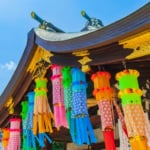
【Aichi Prefecture】5 recommended sightseeing spots in Ichinomiya City | Impressively rich in history, parks, and art!
-
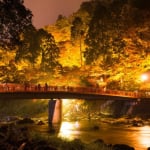
These Are the Breathtaking Views in Aichi You’ll Want to Show Off! 7 Recommended Tourist Spots
-
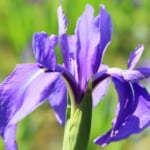
Feel the history of Chiryu City: 7 relaxing sightseeing spots to explore
-

【Aichi Prefecture】 Zaozan Observation Deck | A Breathtaking Day & Nightscapes Viewing Spot with a Glimpse of Mt. Fuji
MOST POPULAR ON Aichi
-
 1
1Doha: Must-see Attractions in the Capital of Qatar
-
 2
2Toronto: 10 Things to do in this Picturesque Canadian City
-
 3
3Amarillo: A City Famous for It’s Amazing Canyons, Great History and Music
-
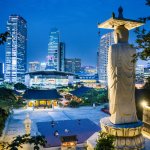 4
4South Korea: Dazzling Scenery, Rich Culture and Fascinating History
-
 5
5Kuwait: A Country in Middle East Asia Famous for Hot Sand Dunes and Stunning Cityscape


